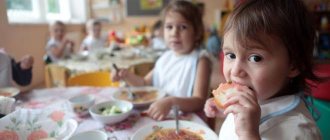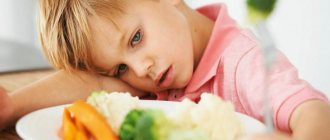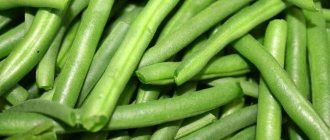The man is already a year old, he has acquired teeth, watches with interest what adults eat and is constantly trying to catch something from their plate. And then someone appears who edifyingly tells the parents: “It’s time to transfer to the common table!” And he will be wrong. We find out what a child’s menu should be for a year so that he grows up healthy, active and happy.
Play-Doh
Play-Doh
What to feed a child per year
A 1-year-old child's daily menu should include dairy and meat products, vegetables and fruits, bread and cereals, vegetable and butter. Twice a week - fish and eggs. Let's figure out what exactly and how much to give to the baby - let's look at the pyramid of the children's diet in detail.
Milk
The very first and most important milk for a child is mother's milk. It not only nourishes, but also supports the immune system, and the feeding process itself is beneficial to the baby emotionally. After a year, a child ceases to be a baby by definition, but this does not mean that breastfeeding should be hastily “curtailed.” Pediatric experts, including the World Health Organization, recommend continuing breastfeeding until the child is two years old. But the number of breastfeeding can be reduced - now once or twice a day is enough.
After a year, your baby can be introduced to cow's and goat's milk. Up to a year, animal milk is prohibited, primarily because children's kidneys are not yet ready to properly remove the excess phosphorus contained in the product.
Together with phosphorus, they get rid of calcium and vitamin D, and this is fraught with the development of a severe form of rickets in a child.
Like any new product, milk must be introduced into the children's diet gradually, especially since there are often allergies to it. Give half a spoonful at breakfast first and observe the reaction throughout the day. If there is no allergy, you can double the portion every day. The milk standard for a one-year-old child is 200 ml per day, plus 100 ml for cooking.
When choosing milk for your baby, remember that it should not be:
- fatty: no higher than 2.5–3.5%, otherwise the load on the digestive organs and bile ducts will be high;
- low-fat: its nutritional value is lost, there are no fat-soluble vitamins;
- unprocessed: “live” milk from the farm must be boiled. Yes, there will be fewer vitamins, but the nutrients will remain, and the milk will become microbially safe.
Dairy products
Fermented milk products appear in children's diets before they are one year old. They are rich in protein and calcium, improve intestinal motility, enhance immunity and should be on the child’s menu every day. But they should be given no more than the recommended amount, so as not to overload the baby’s kidneys.
A one-year-old child needs 40 g of cottage cheese and 150 ml of fermented milk drink per day: kefir, biolact, yogurt, etc. After a year, cottage cheese can be given not only as an independent dish, but also made into cheesecakes, casseroles and puddings.
The menu of a one-year-old child can be diversified with sour cream with a fat content of 10-15%. The daily norm is 5-9 g. It can be added to soup, salad or served with the same cheesecakes.
When your child is one year old, you can treat your child to cheese for the first time: just give him a piece to chew on or add it to pasta, casserole, or scrambled eggs. Cheese is rich in calcium - 600–900 mg per 100 g of product.
But you should give your baby cheese in limited quantities - no more than 5 g per day, because it contains a lot of sodium. Choose hard or semi-hard varieties with a fat content of 30-35%. Remember that blue cheeses, smoked, processed, spicy, pickled and with various additives such as nuts and pepper are not suitable for baby food.
Meat
Every day a one-year-old child's diet should include meat, the norm is 100 g. You can give beef, veal, lean pork, rabbit, turkey and chicken. Offal products diversify the menu: tongue and heart. Liver is also useful, but it is advised to give it no more than once every 7-10 days, as it contains a large amount of toxic substances.
Duck and geese meat is not suitable for baby food because it is very fatty. Same thing with lamb. There is no place for sausages on the children's menu. It is harmful for adults to eat sausages, small sausages, and even more so for children.
Fish
Twice a week it would be good to replace part of the meat portion with a portion of fish. 30–50 g will be enough. Fish is easily digestible, contains iodine, fluorine, copper, zinc, vitamins A and D, B vitamins, polyunsaturated fatty acids and iron.
For the first acquaintance with fish dishes, nutritionists advise choosing not river, but sea inhabitants - they have priority in terms of environmental cleanliness and the content of useful elements. In addition, they are less bony. You can start with low-fat varieties such as pollock, cod, and flounder. And later add haddock, navaga and horse mackerel to the diet.
The advantage of river fish is that it is not as allergenic as sea fish. The most suitable for children's menus are: hake, carp, river trout and river perch.
There is a strict taboo in baby food on smoked and salted fish, as well as caviar - so much salt is definitely not good for a child. It’s too early to spoil your baby with seafood: all kinds of crabs, shrimp, squid, mussels, lobsters and lobsters are too dangerous from an allergenic point of view.
Eggs
It is advisable that eggs be on the baby’s menu 2-3 times a week. Starting from the age of one year, the child can be given not only the yolk, but also the white. It is better to choose chicken or quail eggs, which, by the way, are less allergenic. Eggs of waterfowl - ducks, geese, etc. - are prohibited, as they are most often infected with salmonella.
Due to the potential for infection, any eggs must be cooked before being served on the baby's table. The “soft-boiled” and “in a bag” options are not for babies. The child can be fed a hard-boiled egg, an omelet with milk, or dishes with the addition of eggs.
Vegetables and fruits
The child should eat vegetables and fruits about four times a day. The baby has already met many of them. Culinary acquaintances continue throughout the year; you can try beets, turnips, tomatoes, cherries, strawberries, chokeberries, raspberries, blackberries, cranberries, lingonberries, apricots, peaches, kiwis and citrus fruits.
When your child turns one and a half years old, you can add seaweed salad to his diet. Naturally, it should not contain vinegar! Laminaria is rich in iodine, macro- and microelements, and is easily digestible.
Don’t forget about dried fruits, compared to fresh fruits, they contain several times more fiber and minerals: magnesium, iron, potassium.
Slowly begin to introduce greens into your baby’s menu: cut them finely and add them to salads, soups, and main courses. Dill, parsley, cilantro, and celery are especially useful - they contain a lot of vitamin C.
Legumes
Legumes contain a lot of vegetable protein, fiber, B vitamins, vitamins C, E, PP, carotene, calcium, potassium, phosphorus, zinc, magnesium, iron, etc. But they should be on the menu of a one-year-old child no more than 2-3 times a day. week, because they are known to cause increased gas formation in the intestines. Before giving legumes to your child, they must be thoroughly boiled and, if possible, cleared of coarse fibrous skin. Green peas (fresh or frozen) and green beans are best suited for children's menus.
Cereals
Cereals are the basis of the food pyramid; they should be present in a child’s diet every day. In the morning - in the form of porridge, with or without milk. For lunch - as a side dish. Buckwheat and oatmeal take first place in terms of nutritional value. These cereals are usually used to make the first porridge for a baby before he is a year old. Among the “firsts” are also corn grits and rice.
When the child has already tried porridges made from basic cereals, you can experiment with millet and cereals obtained from wheat - wheat and semolina. Note that semolina porridge is not held in high esteem by nutritionists because it is the poorest in vitamins and minerals. It is not recommended to give it to a child often, only for the sake of a variety of taste sensations.
Healthy pearl barley and barley porridge are hard on a child’s delicate stomach. Barley porridge can be given to a baby only after one and a half years. Barley - after three.
Pasta and bread
Pasta is a lifeline for a mother who is drowning in business, but urgently needs to feed her child. Kids usually like pasta too. And only nutritionists are unhappy, they remind you that pasta:
- can be included in the menu of a child aged 1 year no more than 1–2 times a week;
- It is better not to give to overweight children;
- should be excluded when the child is constipated.
A child can be given bread per year, but not more than 60 g per day. It’s better to start with wheat or rye-wheat. It is advisable to slightly dry it in advance to make it easier to digest. Rye bread is made from sour dough, which causes fermentation in the intestines, so it is recommended to treat a child with it only after one and a half years.
Oil
Butter not only improves the taste of dishes, but also enriches the diet with vitamins D, E, K, A. A one-year-old child can eat 10–20 g of the product per day, as part of dishes or spread on bread. The oil should not be the fattest - the optimal fat content is from 72.5 to 82%.
Vegetable oils are rich in polyunsaturated fatty acids, which are necessary to maintain health for both children and adults. It is enough for a one-year-old child to eat 10–15 ml of vegetable oil daily. In addition to the popular sunflower oil, your baby’s diet may include corn, olive and sesame oil.
Important! Both butter and vegetable oil should be added to ready-made dishes; they should not be subjected to heat treatment.
Vitamins
Vitamin A has a beneficial effect on vision, body growth and the condition of human skin and mucous membranes. Contains: fish oil, beef liver, carrots, red pepper, sorrel, green onions, red tomatoes, apricots, cow butter. Vitamin A belongs to the group of so-called fat-soluble vitamins. Therefore, it is absorbed better and faster; add oil to vegetables.
Vitamin C is one of the most important vitamins; with a lack of this vitamin, immunity decreases and the child becomes more susceptible to various diseases, including infectious ones. The most vitamin C is found in rose hips, black currants, red peppers, and oranges. Further in descending order: cauliflower, green onions, sorrel, spinach, red cabbage, red tomatoes, lemons, apples, tangerines, red currants, white cabbage .
Vitamin B1 is involved in the regulation of carbohydrate metabolism. If there is insufficient intake of this vitamin in the body, irritation of the nerve endings occurs, which is manifested by the occurrence of pain in the muscles, in the gastrointestinal tract, in the heart, etc. This vitamin is found in large quantities in yeast, bread and cereals. And then in descending order: pork, peas, oatmeal, beans, buckwheat.
Vitamin B2 is very important during human growth. If a child is deficient in this vitamin, growth is noticeably delayed. When parents suddenly notice that their child is significantly behind their peers in physical development and is not gaining weight, they should think about whether the child is getting enough vitamin B2 from food. They are rich in: chicken eggs, cottage cheese, cheese, Borodino bread, buckwheat, cow's milk, oatmeal.
Vitamin PP directly affects oxidation processes in the body. If a child lacks this vitamin, he becomes weak, lethargic, gets tired quickly, and is easily irritated. It contains: buckwheat, wheat bread, meat and fish, beans, oatmeal, potatoes, rye bread .
Vitamin D is necessary not only for children in the first years of life, since it is directly involved in the metabolism of calcium and phosphorus in the body. Insufficient vitamin D content leads to decreased calcium absorption. It is formed in human skin under the influence of sunlight. The source of vitamin D is fish oil.
Vitamin B12 - if you don't have enough of this vitamin, severe anemia can develop. Main sources (in descending order): beef liver, beef kidneys, egg yolk.
Vitamin B6 takes an active part in the metabolism of a number of amino acids, i.e., it directly affects the metabolism of proteins. Therefore, this vitamin is very important for a growing child’s body. This is one of those rare vitamins that can be formed in the body (it is synthesized by intestinal microflora). External sources include yeast, liver, egg yolk, legumes, meat, dairy products.
Taking into account the above, we formulate the diet of our little one. All these products are varied, supplemented, all this is much healthier than a diet like “three cookies, a bun, adult yogurt, sausage and dumplings.”
If the child does not eat milk, kefir and cottage cheese at all , you can replace them with: baby yogurt, baby milk or fermented milk formula (Tema, Agusha), cheese (no more than a piece per day), goat or soy milk - just in case he likes it. Beat the curd with fruit in a blender, make cocktails and soups with the addition of milk.
If a child does not eat boiled vegetables at all , perhaps he will like raw, baked, or assorted vegetables on a plate that can be eaten with his hands.
If your child doesn’t like porridge , add cereal to soup, cutlets, and cheesecakes. Try pasta made from different grains (buckwheat, etc.) Stores and pharmacies sell children's bread made from buckwheat, corn and rice. Rye or wheat bread should not be given to children; they consist of hard fiber, which can cause severe stomach and intestinal upset.
If a child does not like meat , it can be partially replaced by dairy products, eggs, cheese, peas, beans, soy, eggplant, and rice.
To satisfy the “night cravings” (sometimes the child willingly eats an hour or half an hour before bedtime), use green apples, kefir, and raw carrots.
For your peace of mind, keep notes : write down how much and what kind of food your child ate during the day. Most likely, it will not be so little. And you will have the opportunity to adjust his diet in the direction of benefit.
Each child is individual. Each person's genes determine different needs, and therefore it is impossible to answer exactly how much a child should eat. Children often know better than their parents how much food they need. Therefore, your task is to provide healthy products and dishes and invite your child to the table on time.
How to cook properly for a one-year-old baby
After a year, a very important stage in a child’s nutrition should begin - a gradual transition to solid food. Now it is very important for the baby to learn to chew food, so he will develop chewing muscles and improve the ability to voluntarily control the movements of the organs of articulation.
To begin with, try offering your child, instead of “fluffy” puree, a vegetable stew, simply mashed thoroughly with a fork. A little later, you won’t need to mash the vegetables; it will be enough to chop them finely. Start preparing porridge from regular, unground cereals. Make salads from finely chopped fruits and vegetables.
An important principle in preparing baby food is to preserve the beneficial substances contained in the products as much as possible. Therefore, use gentle technologies: boil, bake, stew, steam.
Remember that a significant part of vitamins is destroyed by heat and exposure to moisture and air. Never peel vegetables in advance - only before putting them in the pan. The water should already be boiling at this point. To preserve minerals in vegetables, cook them in salted water. This rule does not apply to beets—cooking them in salted water worsens their taste.
Prepare soup for your child without frying it. If the soup is meat, be sure to drain the first broth.
How to feed babies
My kids used to eat everything. Even unleavened boiled vegetables. Even, although it’s completely hard to believe, the manufacturer passes off as broccoli puree a stinking, swamp-colored liquid like the one the main character drinks in the film “The Thomas Crown Affair.” Even tasteless baby cereals with water. And my friends were jealous of me. But this nostalgic time quickly ended.
By the age of two, each of them did not eat anything. Almost. In some surprising way, the list of hated foods included almost everything that a normal person would usually want to feed their children. Everything is useful. Rice. Greens – even hidden in your favorite omelet. Fish. Zucchini. Green bean. Yoghurts without additives. Kefir. Grapefruits. Every breakfast, lunch and dinner became mutual torture. The table resembled a battlefield, and - to be honest - the battle did not end in my favor. Requests and pleas, threats and attempts at bribery - everything was to no avail. The children left the kitchen hungry, but with a sense of their own superiority. I had to take the untouched plates with melancholy and impotent anger.
Cunning and patience are virtues that every mother should acquire by the end of the second year of a child’s life. If, of course, he wants to survive. The plate of soup began to turn into the deep sea, and the vegetables in the spoon began to turn into shipwrecked wanderers desperately wanting to survive (for some reason, certainly in the stomach of a child). On the oatmeal porridge you have to draw different creatures with jam, and then watch how the ears, eyes, tail disappear one by one... Chop the greens and quietly add them to the minced meat. Pass off fish cutlets as meat cutlets. Zucchini fritters - as usual. Everyone lies, especially parents.
In fairness, it must be said that, after all, my children ate and eat some things without any violence, even with pleasure. First of all, this is pasta, and I think they are unoriginal here. But the main thing in our pasta is the sauce, which is done in 5 minutes and always causes uncharacteristic satisfaction. Fresh tomatoes and so-called “tomatoes in their own juice” (domestic or Italian Pomito) are brought to a boil along with a couple of tablespoons of olive oil, sugar, salt and a clove of mashed garlic. Then the sauce - and the more of it, the better - is poured into the pasta, the dish is covered with grated cheese and eaten immediately.
The most difficult thing is to pour soup into children. After all, this is a thing that is difficult to appreciate until you become mature and wise. What child loves soup? Rarely. And this is despite the fact that in our culture it is believed that without soup, lunch is not lunch, you will not be properly full, and until you eat at least a few spoons, you will not see another. Every lunch begins (or rather, it all begins half an hour before lunch) with a soul-rending: “I won’t have soup!” Quite quickly, a second cry is added to the first one: “I won’t either!” And here there is no time for cunning. You are left alone with your righteous anger and a pot of that healthy, seasonal and young thing that you just dragged from the market in heavy bags to cram into your pale Moscow children.
But there is one soup that my children never refuse and which I make exactly the same way as my mother did, as my grandmother did, and as I believe her mother and her mother’s mother did. This is broth with dumplings - a magical soup with jewels. It is wonderful both on its own and because it can be done with children. When the chicken is cooked for the second time, when the surface of the broth acquires a wonderful golden hue, when the carrots become soft and the top layer is separated from the onions, then the tip of a teaspoon is dipped into the boiling liquid, the dough slides to the bottom of the pan and immediately floats up in the form of a newborn a strong, unsightly, but impossibly tasty dumpling. If the child takes part in this process, I give him five fingers: he will eat the soup and also ask for more.
Or lazy dumplings. We also do them together. You need two packs of nine percent cottage cheese, an egg, a couple of tablespoons of sugar and flour, which is added to the dough until it becomes moderately stiff. Then several long sausages are molded from this mass, and this is exactly the most interesting thing - making long rolls of dough, pressing them with a knife and chopping them into small, neat pieces. All this is thrown into boiling, barely salted water, floats up, is taken out and filled with sour cream or, for example, strawberries pureed with sugar.
What about something sweet?
In our culture, it is customary to treat children to candy, and this is completely wrong. Sweets increase allergic reactions, lead to excess body weight and provoke the appearance of caries, so the later the baby gets acquainted with them, the better.
You can sweeten foods only if the baby refuses to eat bland food - cottage cheese, porridge, etc. But first, try to improve the taste with berries, fruits or dried fruits.
If you still can’t wait to pamper your child with something sweet, let it be marshmallows, marshmallows, marmalade, jam, marmalade, marmalade or children’s cookies. But only after the main meal.
What you can and cannot drink
For a child, as for an adult, the ideal drink is plain water. You can offer your baby boiled water from the tap or buy special water in a bottle marked “for baby food.”
Compotes from vegetables, fruits and dried fruits diversify the drinking diet well. Try cooking them without sugar; most likely, your baby will still like it. It is also better to make vegetable and fruit juices yourself. However, you shouldn’t feed your child with them often: they don’t contain dietary fiber, but there is plenty of sugar and acids.
At one year old, your child can already be given weak herbal and fruit teas. It is healthy to drink cocoa; it contains proteins, carbohydrates, fats and a biologically active component that can stimulate the activity of the cardiovascular and nervous systems. Sometimes you can treat your baby to surrogate coffee, which is made from barley, oats, rye, chicory, soy, chestnuts, etc.
Do not give your child tea, cocoa or surrogate coffee after fish and meat dishes. These drinks contain substances that prevent the absorption of certain nutrients, such as iron.
Do not treat your baby to carbonated drinks, even mineral water - the carbon dioxide they contain irritates the gastric mucosa.
How to create a menu for a 1 year old child
Experts advise preparing a menu for your child for the week in advance. This makes it easier to ensure that your baby’s diet is balanced. It is important to immediately establish a regular eating schedule and, if possible, not deviate from it by more than 30 minutes. Thanks to the regime, the child develops a conditioned food reflex, and this helps to digest and assimilate food well.
It is recommended to feed a one-year-old child five times a day. three main feedings: breakfast, lunch, dinner and two additional ones: afternoon snack and feeding before bed.
A child from one to one and a half years old needs approximately 1000-1200 ml of food per day, from one and a half to three years - 1200-1500 ml. The volume of food per feeding should not exceed 300–350 ml.
The total calorie content of the dishes should now be approximately 1300 kcal. A child's menu for a year may look something like this:
- Breakfast: porridge with milk 180 ml, fruit 30 g.
- Lunch: pureed vegetable soup 120 ml, meat soufflé 50 g, side dish of rice 80 g, compote 100 ml.
- Afternoon snack: fermented milk drink 150 ml, fruit 100 g.
- Dinner: vegetable stew 150 g, steamed chicken cutlet 50 g.
- Before bed: breast milk or infant formula.
- share with your friends!
What is better not to do if the child does not want to eat?
Do not force your child to eat until the last crumb.
Otherwise, he will not learn to recognize the feeling of hunger and satiety. By allowing your baby to stop eating when he wants, we teach him to better understand his body and make healthy food choices.
You should not negotiate, argue with your child or bribe him to eat.
Threats, punishments and rewards are also not the best way to do this. Avoid phrases like: “If you eat 3 more spoons, you will get dessert.” This teaches him to negotiate with you and get rewarded for other things. Also, making dessert a reward gives it more value in your child's eyes than other foods. This can lead to an unhealthy relationship with sweets.
Monitor your emotions if you worry when your child refuses to eat. Perhaps he is seeking your attention in this way and refuses food to spite you.
Do not distract your child to feed him by playing airplane or enticing him to look at a bird.
Often parents and grandmothers do this if the baby is not eating well. The baby does not concentrate on food. As a result, the more you distract your child from eating, the less he understands whether he is hungry or not, whether he likes food or not. And the more likely he is to have eating problems in the future.









